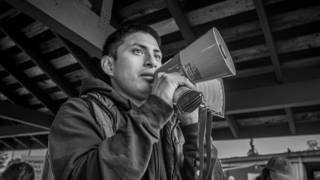
Topics
Seven days from now, on May 20, 2002, the tiny half-island of East Timor will achieve its independence and become a new nation. It’s a rare moment in history made all the more extraordinary by the incredible suffering of the East Timorese over the last 27 years. When I first traveled to East Timor 12 years ago in 1990, East Timor was one of the most repressive places on earth, occupied at that time for fifteen years by the brutal Indonesian military and supported by the silence of the media, and US guns, money and political clout. When I returned in 1991, journalist Allan Nairn and I witnessed Indonesian troops using their US M16s to slaughter hundreds of Timorese in a commemoration procession to the Santa Cruz cemetery. The Santa Cruz massacre galvanized an international movement to support independence for East Timor and hardened the determination of a new generation of Timorese activists to challenge the Indonesian occupation.
In the fateful days of August and September 1999, the East Timorese turned out in overwhelming numbers to vote for their independence in a UN-sponsored referendum, only to have the Indonesian military and its militia allies burn East Timor to the ground, displace the population and kill thousands of people, while the US and other powerful nations looked on in silence.
East Timor is a tiny nation about 400 miles north of Darwin, Australia, in the eastern end of the Indonesian archipelago. Indonesia invaded East Timor in 1975 after 400 years of Portuguese colonialism, killing a third of the population, aided by US weapons, training and political support. For a quarter of a century the East Timorese never stopped resisting the Indonesian military, despite mass killings, torture and destruction, on a truly horrific scale.
For more than a decade Pacifica radio and Democracy Now! have almost literally been the voice of East Timor in the US, breaking through the silence of the corporate press and offering a space for the voices of the Timorese and of grassroots activists around the world fighting the complicity of the US government in Indonesia’s crimes. East Timor’s people are no longer united in the face of a vicious enemy, and the Indonesian and US officials responsible for their suffering may never be brought to justice. As one of the poorest countries in the world, East Timor now faces incredible challenges, challenges many poor countries face in a world dominated by powerful governments like the US and by institutions like the World Bank and the IMF. East Timor faces a long journey from invasion, to annihilation, to independence, and what lies ahead. For the next ten days Democracy Now! will share East Timor’s journey with you. Today we will begin on the plane from New York to Australia. I’m still banned from Indonesia for reporting the massacre of 1991. I was arrested in 1994 by the Indonesian military, deported twice in 1999 when I tried to report on the vote for independence. This time, Democracy Now! flew to East Timor through Australia.











Media Options